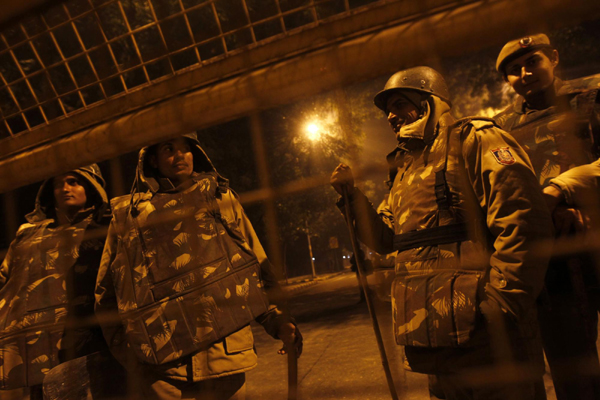SOCIAL MEDIA SITES DRIVE PROTESTS
New Delhi has the highest number of sex crimes among India's major cities, with a rape reported on average every 18 hours, according to police figures. A global poll by Thomson Reuters Foundation in June found that India was the worst place in the world to be a woman because of high rates of infanticide, child marriage and slavery.
Since last week's rape, the authorities have promised better police patrolling to ensure safety for women returning from work and entertainment districts, more buses at night, and fast-track courts for swift verdicts on cases of rape and sexual assaults.
 |
|
Policemen stand guard on a road to stop demonstrators from moving towards the India Gate in New Delhi Dec 24, 2012. [Photo/Agencies] |
But protesters view those measures as inadequate and are looking for the government to take a firmer stand on sexual assaults countrywide, most of which go unreported.
Reported rape cases in India have increased by 9.2 percent to 24,206 cases in 2011 from 22,172 the previous year, according to the latest figures from the National Crime Record Bureau,
"This is not about that one rape," said aspiring fashion designer Shruti Sharma, 24, at a protest in Delhi on Monday.
"This is about how crime is rampant in our cities. We are angry at the government for not ensuring the safety of its citizens. The judiciary is slow. Cases take too long."
Opposition political parties, normally quick to exploit the government's vulnerabilities, have largely been sidelined in the protests, which have mostly been organised through social media sites such as Twitter and Facebook.
The protesters come from all walks of life but many are young and middle class. Political commentators see their involvement as evidence of growing frustration with the government's focus on poor and rural voters and a failure to pass on the benefits of a decade of rapid economic growth.
So far, however, the protesters' focus has been on the rape case rather than on other grievances.